We selected Brittany as our canal boating destination with a little trepidation. Brittany, on France's NW coast has a reputation for lots of rain, but we thought that the region would be a bit lesss crowded than the Midi-Camargue area in the south of France. Now only time will tell.
Our very helpful hotel reception organised a large taxi for us, four people plus luggage won't fit into most medium sized sedans. The Locaboat base location was nominally a small town called Melesse, but in reality it was about 7 km away at "Ecluse Bouessay" on the Canal d'Ille-et-Rance, based at the old lock-keepers cottage. It made the set up logistics a bit challenging for long distance travellers like us. So we started our day with me dropped at Locaboat with the luggage and to do the paperwork. Ann, Choco and Vikki took our taxi back to Melesse to do our provisions shopping. They did the shop in record time, as the taxi was outside waiting. By the time they arrived back at the boat,we had run up a 120 Euro taxi bill (about NZ$212). Times like this you divide things by 4 and get on with it.
The Locaboat staff had our boat ready and were happy to do the handover early. We have usually had the Waterways guide for our trips, but apparently I didn't tick that box on the application form this time, so we hadn't been able to check in detail where we were going on our trip. The guide shows all the local detail with a bit of commentary and more importantly the details of locks, shallows, bridges and all the hazards. So we picked up our guide book and went through the briefing on the vessel.
The first lock was only metres away from the boat mooring so it was straight into action for the crew, whose last lock was in Joigny in 2018!! Ann had taken a tumble on a crowded sidewalk in Paris and had a badly sprained and bruised hand, so she wasn't available for her usual role of "stern hand" on the ropes. Vikki moved to that space and Choco went to "forard hand" and relinquished his "shore rover/lock assistant" roles. In the Brittany canal network the lock keepers prefer to have everyone stay on the boat. They have a bit more automation in place and use electric motors much more than windlass mechanisms to open gates. In this reconfigured crew mode we lost Choco's wild food gathering ashore, so things like apples, raspberries and herbs were off the menu. All the locks have a lock-keeper's house but few are occupied these days, and very few by the current keepers. For the busy summer season many sstudents are working the locks as a holiday job. Some houses have well-tended gardens.
Don at Melesse Locaboat had a recommended itinerary for our 154 km, week long journey on the canals and rivers. Our first overnight stop was the village of Betton, which has a Sunday produce market that we were keen to see. This made our first day a short 11 km run, but with 6 locks to manipulate. Not quite a "re-baptism by fire," more an opportunity to adjust to the changed crew configuration. We travelled south, back towards Rennes through some intensive wheat, maize, sweetcorn and the odd cattle beast of both dairy and beef varieties.
The canal network is huge in France, you can enter it in the English Channel and exit in the Mediterranean. I think it's also possible to go from the Atlantic coast near Bordeaux to Germany, but we don't have time for such lengthy expeditions. Many of the locks have old mills and barrages adjacent. The area is rich in wheat and other grain harvests so water power was a useful source.
Alongside the mooring area at Betton was a very large carpark that was a hive of activity when we arrives and stayed that way all afternoon and evening. The evening crowd was for a large family restaurant adjacent to the carpark. There would have been hundreds dining there over the evening. We enjoyed the entertainment as we had drinks and dinner on the Flying Bridge under our large Bimini cover. When we arrived we cycled and walked the town, visiting the supermarche to top up after the morning rushed 'mustn't keep the taxi waiting' shop.
Sunday morning we woke to the aroma of freshly baked bread, and it was a bit of a surprise to see the market had been quietly set up while we slept.We had planned to go to the market, but it was very convenient to have it actually come to us. We had a lovely time wandering and stocking up. Fresh blueberries, strawberries, peaches, nectarines, apricots, fennel, beans, peas, tomatoes, pates, terrines, veal paupiettes, oysters and of course le pain. Bread is an everyday purchase here, no buying a loaf and working through it, we do things the French way for our canal boat eating. We also bought a meal of veal paupiettes, are a local specialty, veal schnitzel wrapped around a savoury mincemeat, delicious!
Our next scheduled night was at Port Rean, 13 km and 5 locks down the canal to Rennes, then 18 km and 5 locks on the river Vilaine. Interesting to add the city transit to our rural meanderings. And interesting to see the city sights we'd walked around a few days ago from a river dweller's perspective.
The rivers and canals have a lot of bird life, much of the land is quite low-lying and marshy, particularly once we were in the the Vilaine River.
Port Rean was a hive of aquatic activity; we moored and watched the locals enjoying kayaking, paddleboarding, while we got organised for our evening.
Did I mention the local wines, which are always a feature of the menu. Port Rean is a pretty little village; we wandered the town in the morning, visited the spectacularly neat and tidy cemetery and enjoyed a coffee before casting off for Messac.
The area has suffered significantly from flooding in the past, some of the records are spectacularly high. There's also evidence of recent issues in damage and traces of debris high in trees.
River travel is quite a lot quicker than the canal, we can increase speed to 8 km/hr and add a little river flow assistance to that, so the 30 km and 6 locks go past relatively quickly. We are not in any hurry; this is life in the slow lane with a vengeance. At Messac we misinterpreted Locaboat briefings and were expecting to moor in the town and be able to connect to shore power, and fill the water tanks. The lock keeper put us right on that, and then was amused as we exited the lock, and did a smart 180 degree turn and motored straight back into the lock. We went a little way back upstream to the Le Boat Marina, and overnighted there with power and water provided. We unloaded bikes, headed to the supermarket and had a look around the ville.
We departed to coincide with the lock keeper's 9 00 am start and get ahead of several big Le Boat vessels readying for their week out! In Brittany it's usually only one boat in a lock so there can be significant waits if there's a queue.
That worked well and we were heading for the city of Redon, 48 km and just 1 lock downstream. Redon has a big pier for visitors and great facilities ashore for those looking for a break from the boat's small showers. That said, we have plenty of space, with three bedrooms with attached bathrooms, a decent galley and good indoor and outdoor space.
This town provided an unusual laundromat attached to the Total petrol station just in the street. This was operated for us by Ann, providing a walking to the supermarche opportunity for Choco and Vikki, and for me a bike sortie to the Intermarche which was '2 minutes' away. Took me a little longer on the bike. Total is a sponsor for the Rugby World Cup as this flag reminded us.
Exiting Redon was quite dramatic. The lock is fully automated, and once we were inside it there was a graunching sound and the steel bridge over us lifted up slowly!
The L'Aff is very narrow, so it's a slow trip but quite atmospheric to be almost enclosed overhead by the surrounding forest at times.
La Gacilly required mooring stern in, and we achieved that well with all hands aft.
This village is home to about 30 artists and artisans, and there was a special photographic display of immense proportions. The themes are from around the world and feature different cultures, environments and world issues. We spent a few hours wandering the streeets and the displays, and taking in the very different to home old buildings and construction. The flowers here were lovely and definitely provided a refreshing break from the fairly monochromatic brown-grey of most of these old towns.
We had an overnight at a little place, Le Petit Moulon, just a few km from St Martin sur Oust, having made a plan to go a further 15 km past St Martin to Malestroit for our second to last night. The morning entertainment was a couple of old fishermen who were encamped further along the jetty. The nearby display board told us of the fish to be caught in the local area and the surprisingly large size limits, for instance 60 cm for a brochet (pike). They were catching little saury.
There are a huge range of boats on the river and as well as the 'day trippers' like us, others who live on it, in immense old motorized boats.
Malestroit is a somewhat larger town with a long history. Our canal guide told us that the port area had power and water, and it was a bit disappointing to find this wasn't actually the case except for a handful of boats that could moor on the only narrow powered jetty area. However as we are getting low on our provisions we managed the setback and didnt suffer from warm beer and wine.
The town had eight mills at one stage to cater for the surrounding area's wheat growing, and to provide power for fabric manufacture and tanneries. Two mills remained working by the start of the nineteenth century. The last flour processing mill only closed in the 1950s.
It was here the truce that ended England and France's Hundred Years war was signed by the English and French kings at the now ruined Chapelle de la Madeleine.
Malestroit also has a large, operational Monastery for the Augustine Sisters, who have provided assistance and medical help in the community for centuries. They were active in World War II and in one notable achievement hid Allied parachutists by dressing them in habits and sending them to the chapel to pray devoutly while German soldiers searched the buildings.
We did a self-guided town walk with the help of brochures from the Tourist Information office in town, much of it in French which required pooled knowledge and inspired guesswork.. Lots of half-timbered houses and a huge range of stones in the masonry walls.
We decided that we would have a night off boat food and booked in to a local restaurant, resyaurant du Corps de Garde. The dining was superb and we had a meal to remember.
Next day we cruised back to our finish base at Locaboat St Martin-sur-Oust. The boat was due in by 9 00 am Saturday and it's easiest to overnight in port. That allowed us time to pack and get ready for a departure to St Malo and the Brittany coast. All in all another great week of peaceful cruising in a surprisingly interesting area of France. And no rain at all!





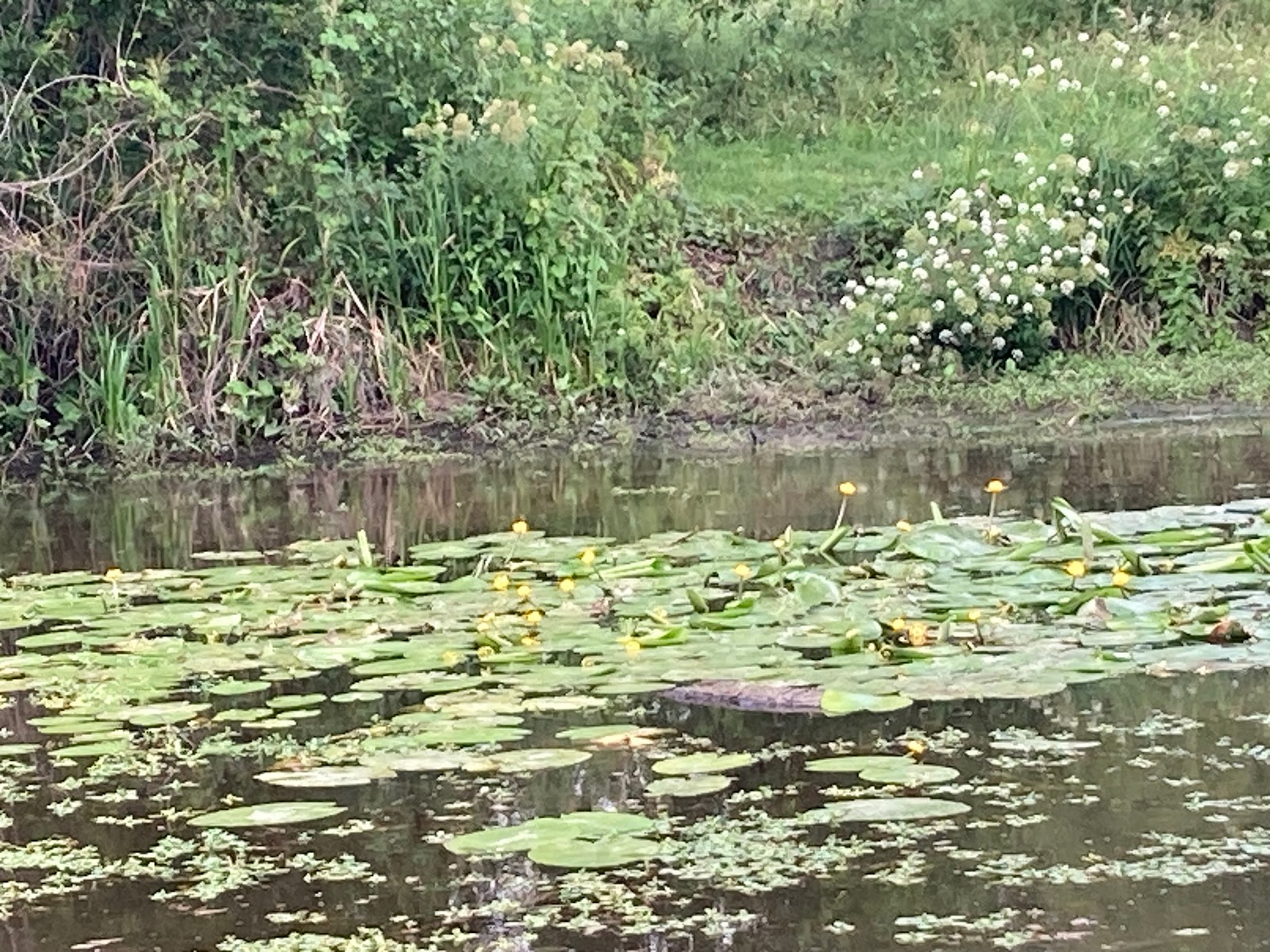


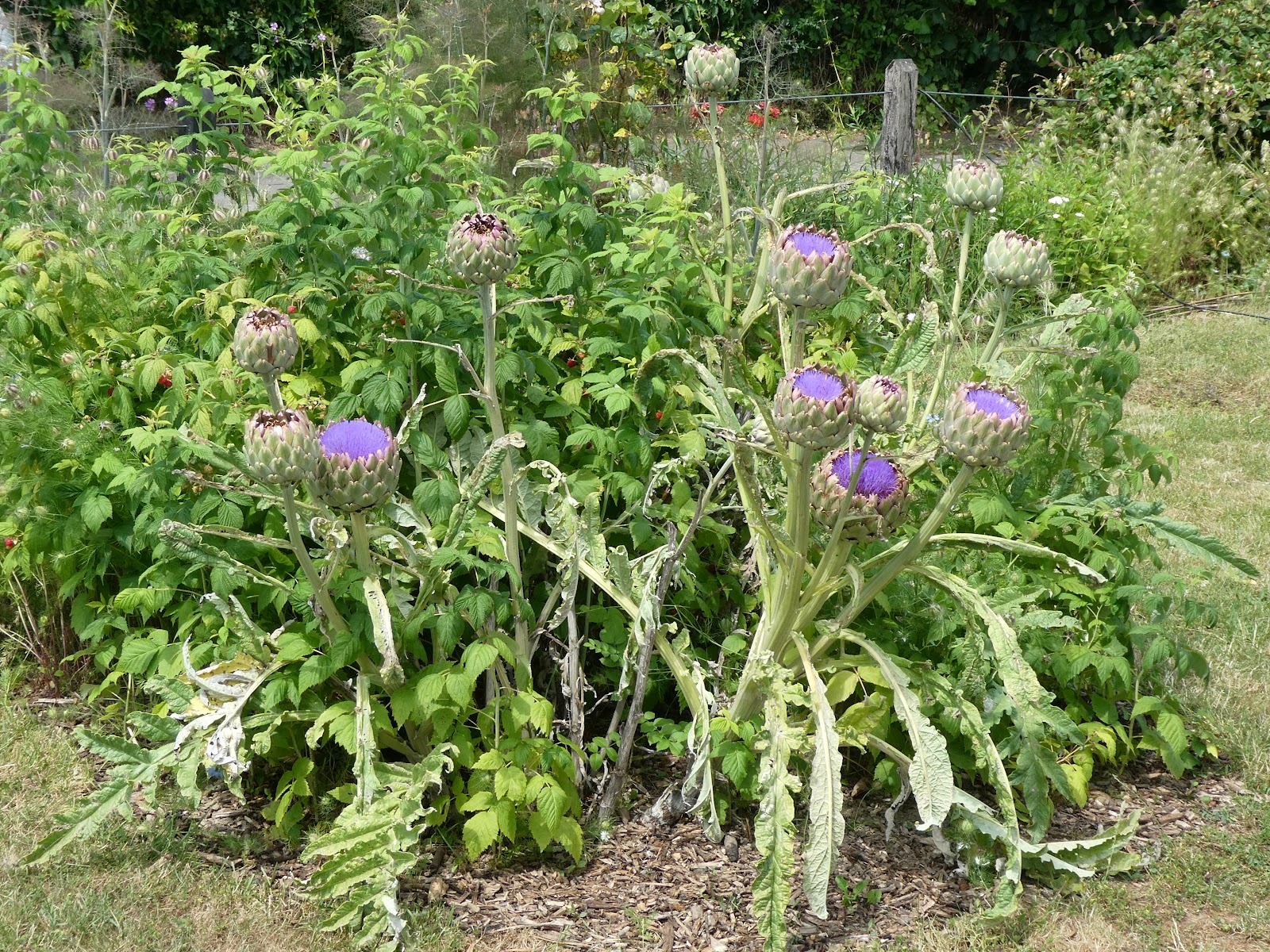



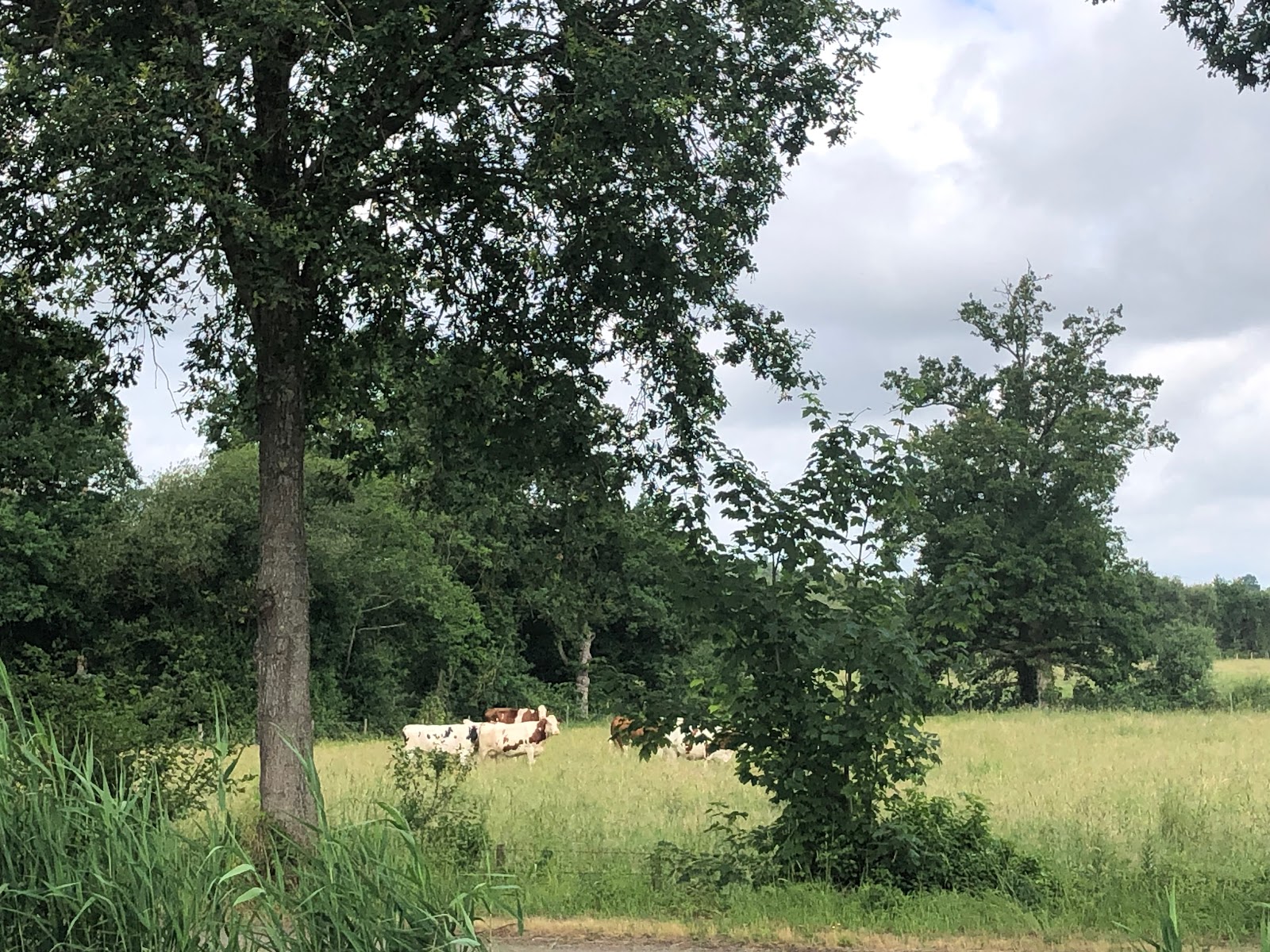



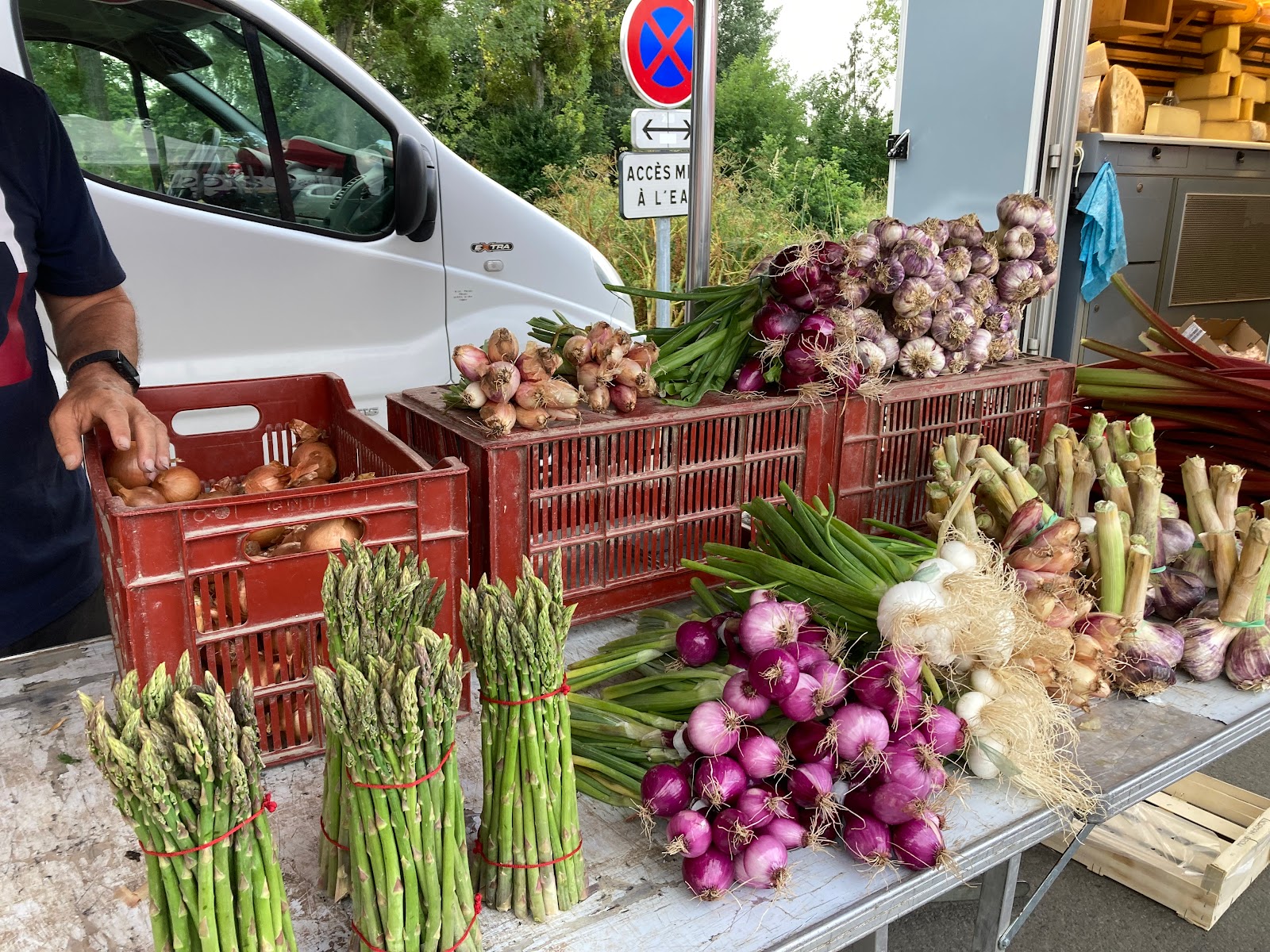




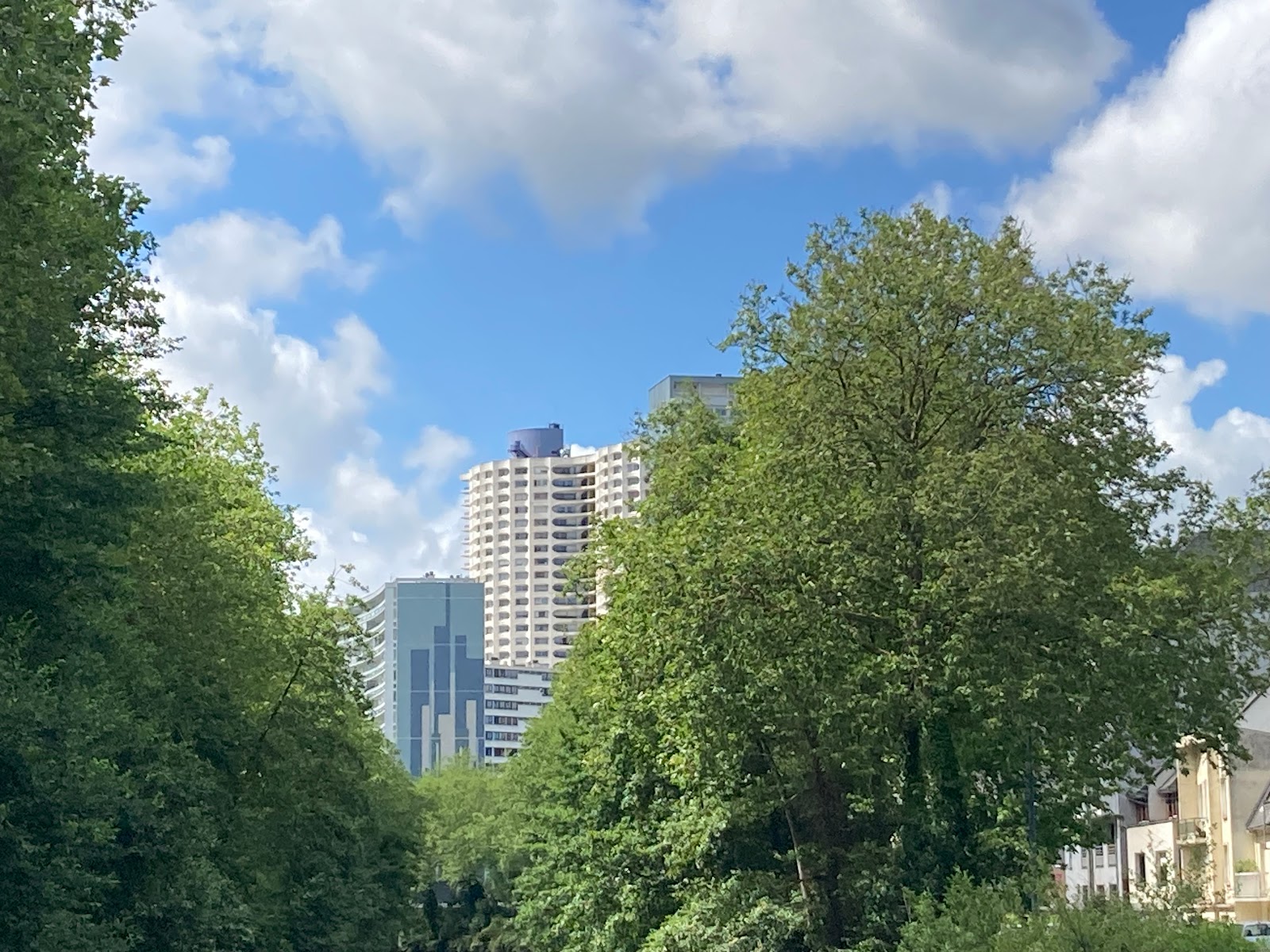







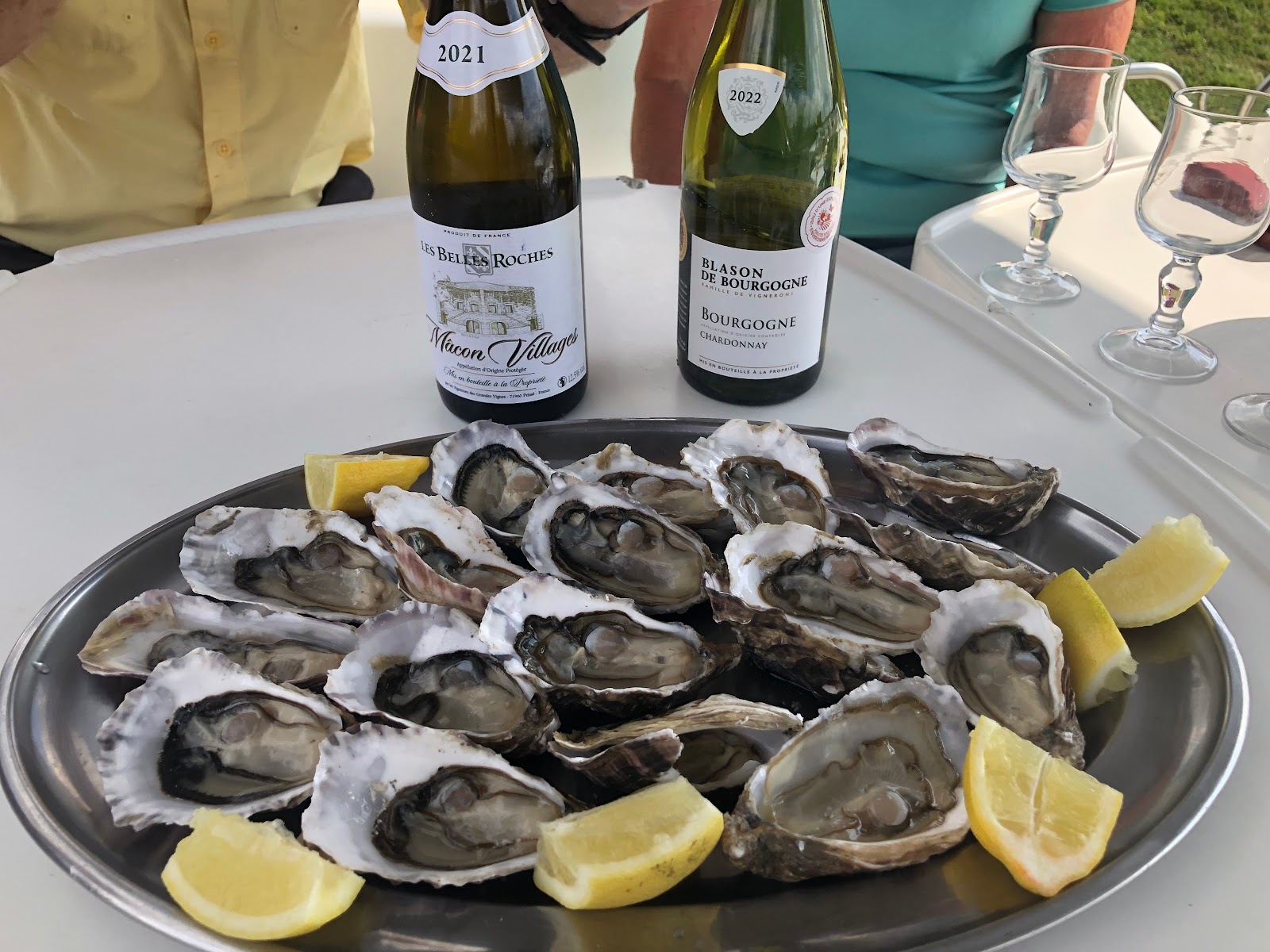



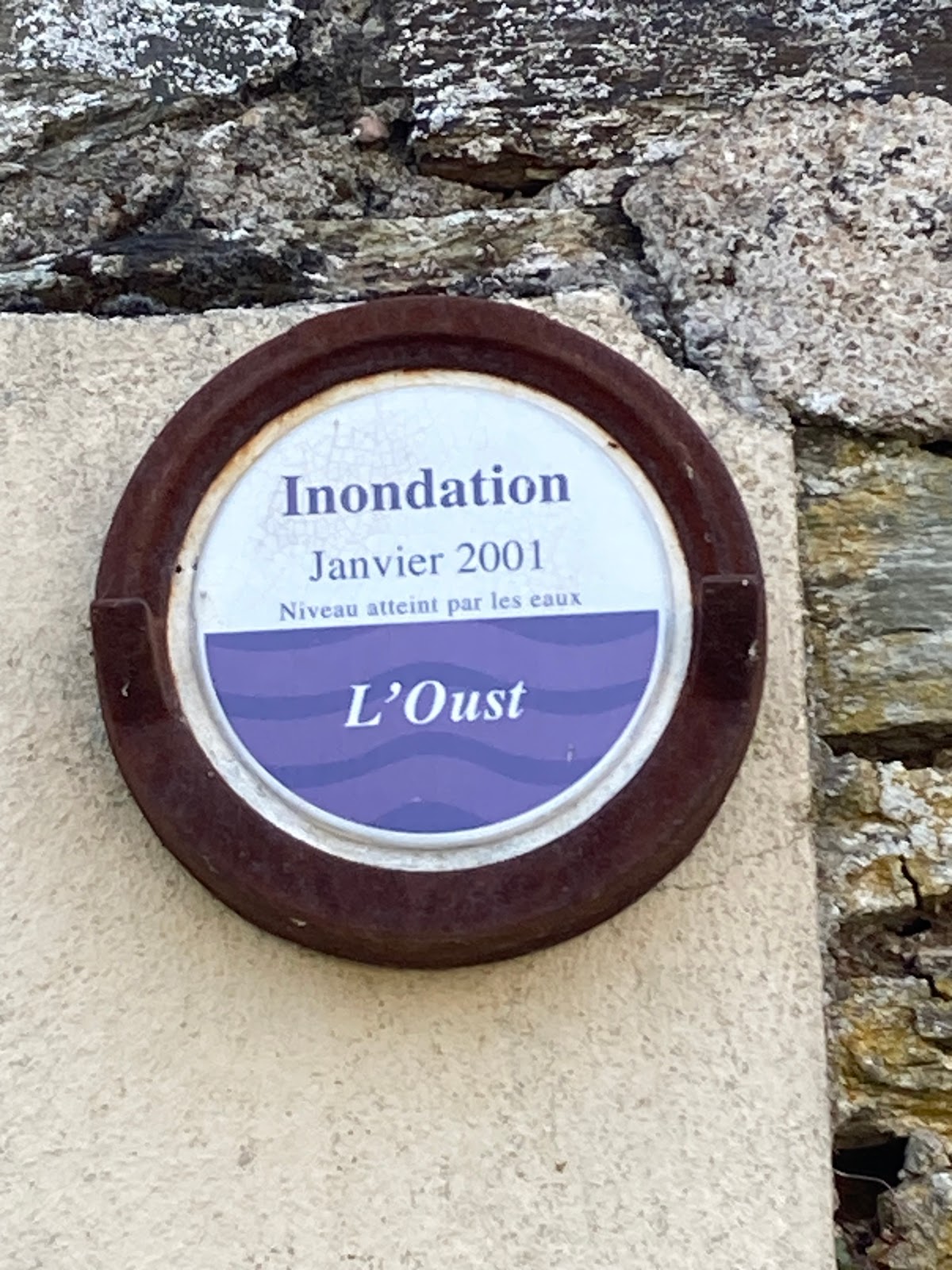



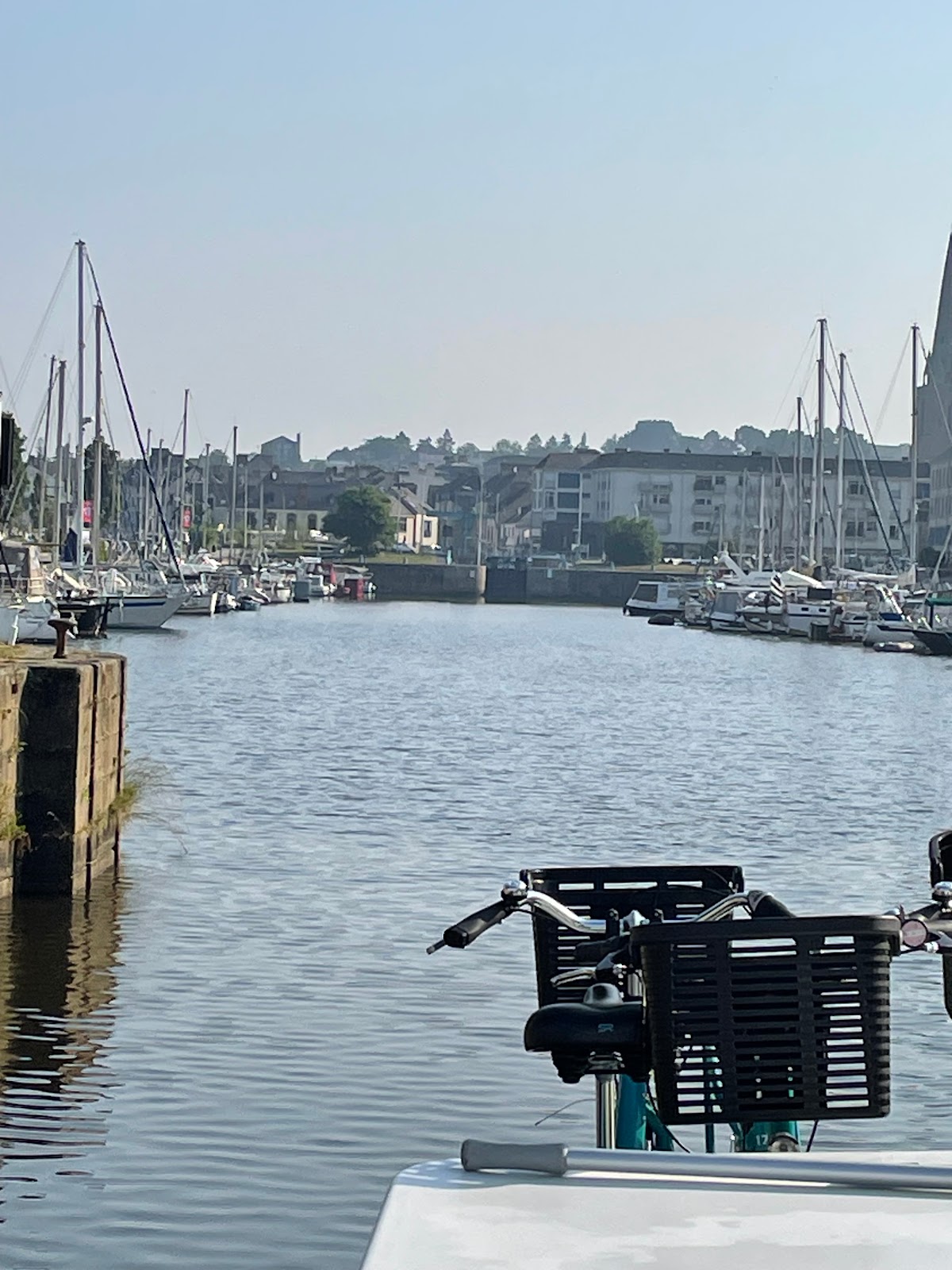



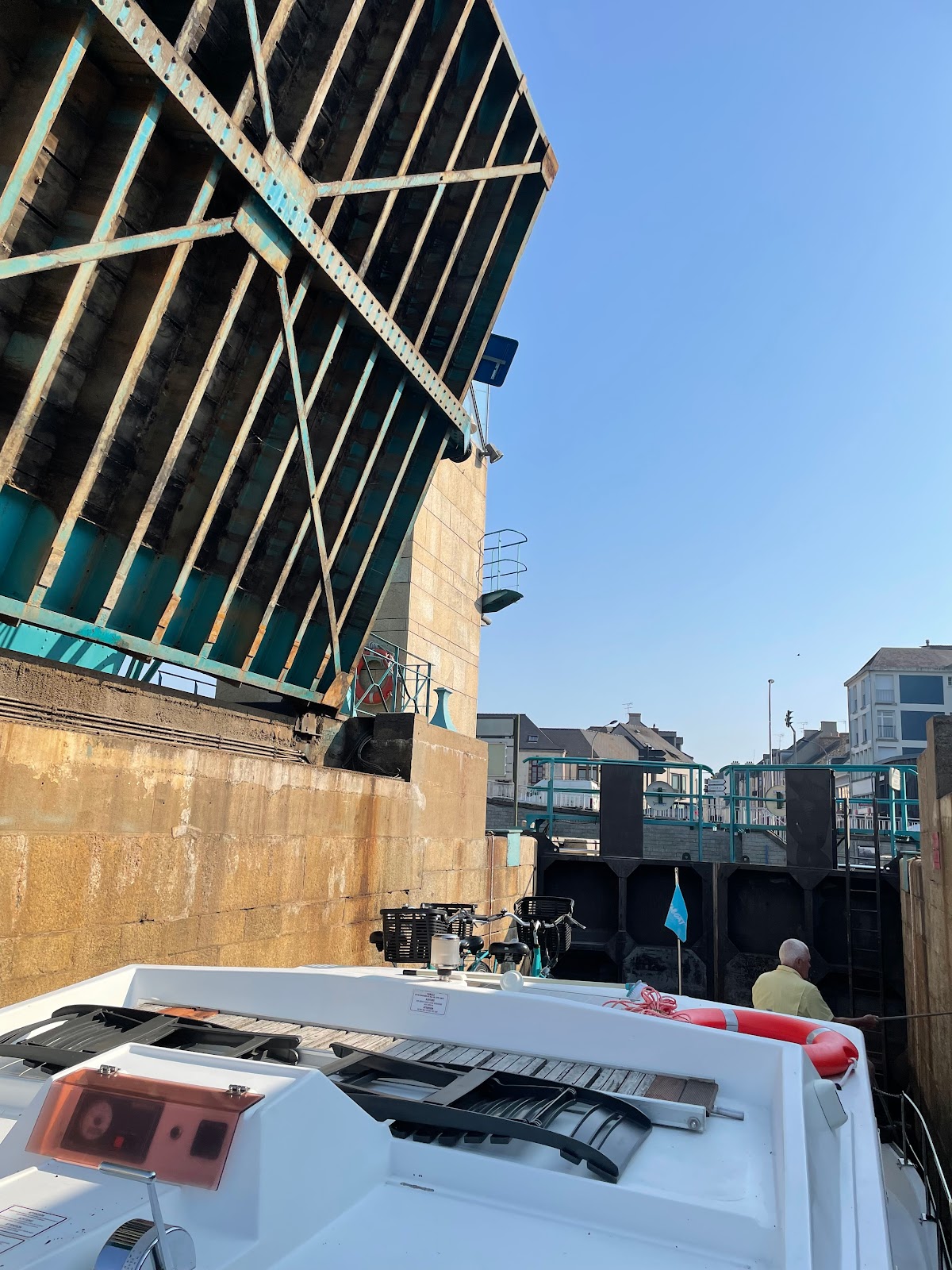
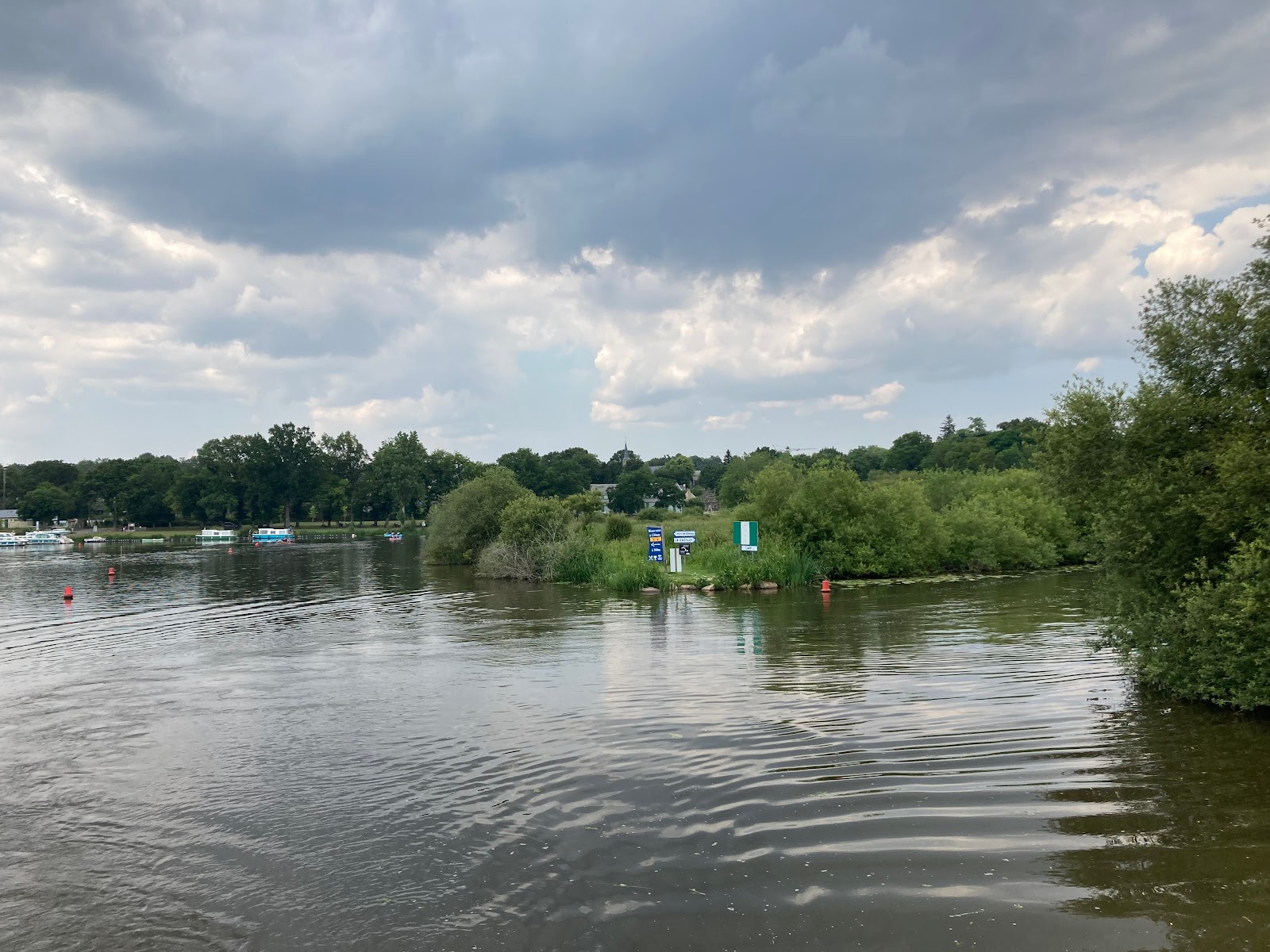





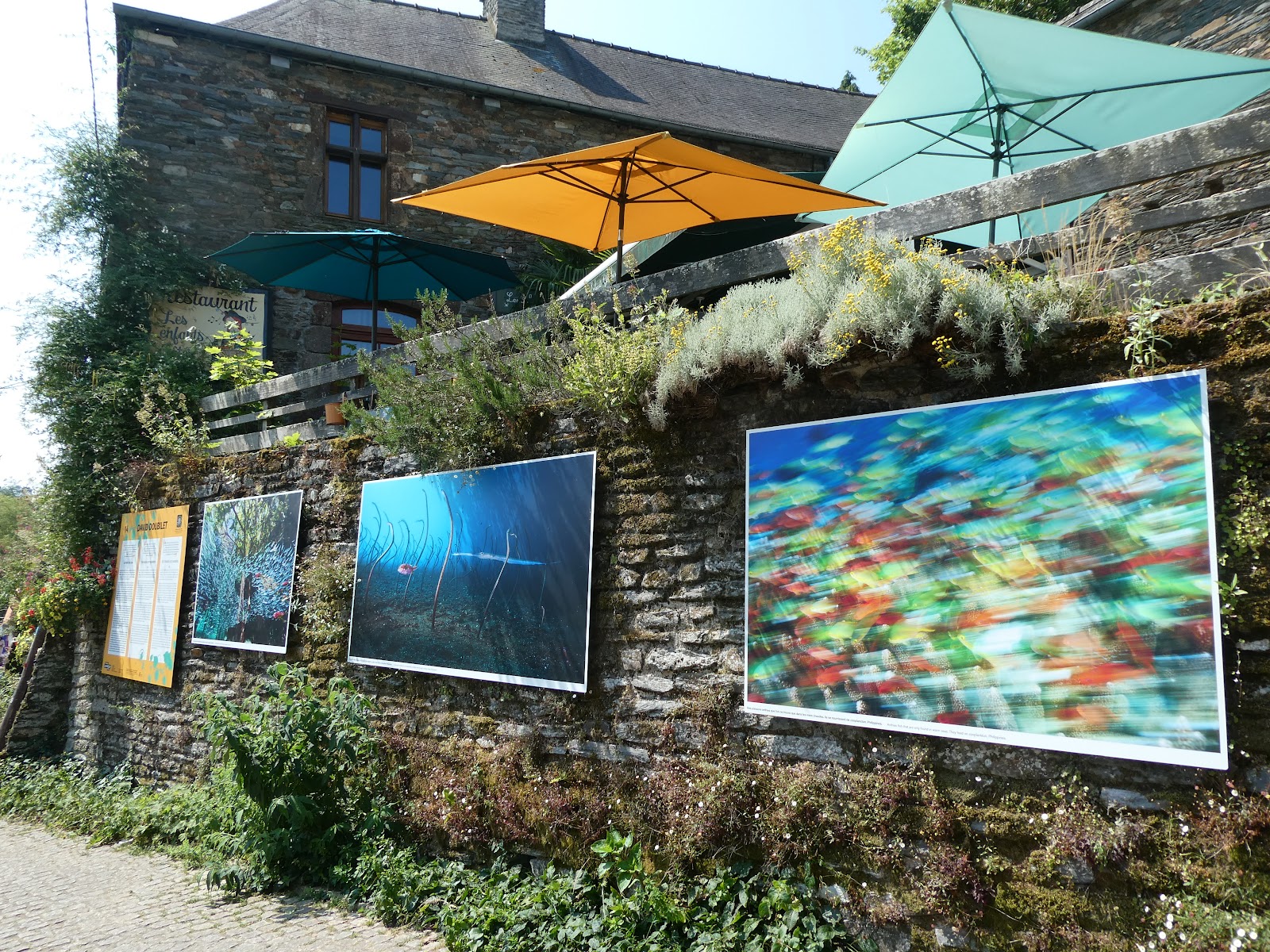










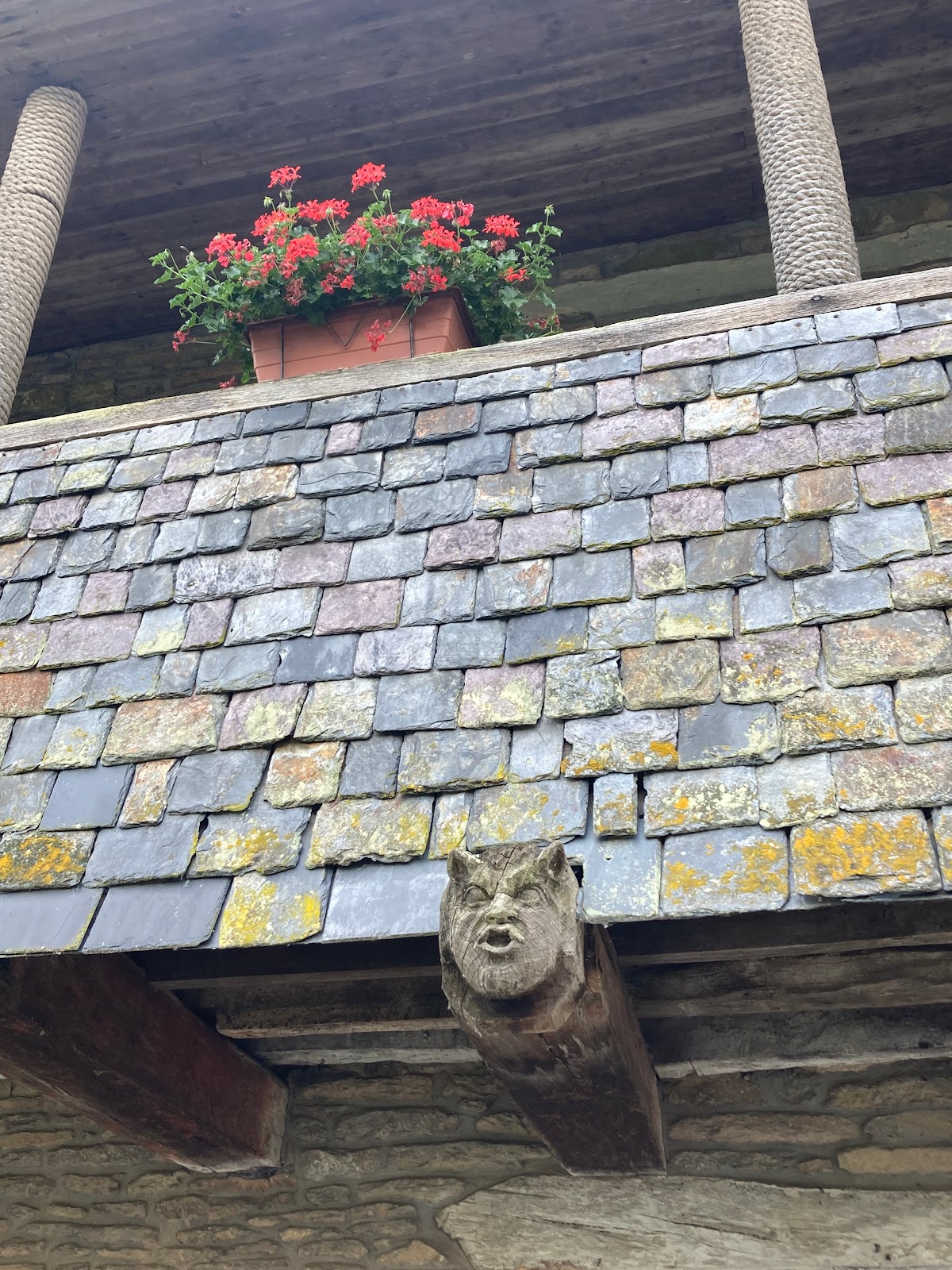







No comments:
Post a Comment